

Max Davies
2026 Toyota HiAce review
5 Hours Ago
City cars occupy a shrinking corner of the Australian new car market, but they're not dead yet. The Polo and Rio are two of the best.

Contributor
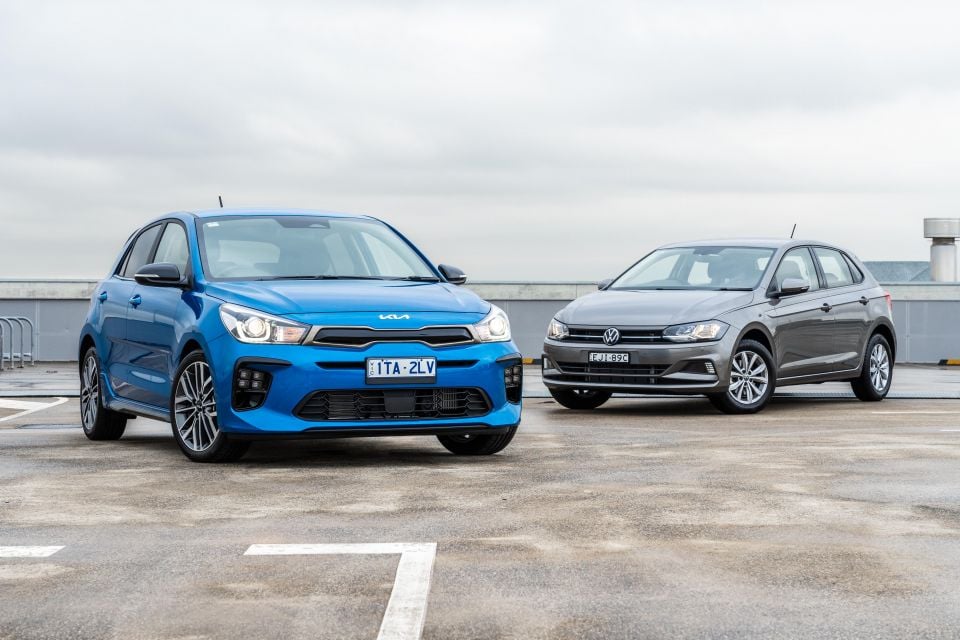

Contributor
City hatchbacks aren’t big business like they used to be, but they’re still alive and kicking.
The Kia Rio and Volkswagen Polo are miles removed from the cheap and cheerful city cars of yore. They’re safer, more powerful, and are loaded with more equipment.
But they’re also more expensive. With list prices around the $25,000 mark, these cars occupy a space previously associated with their bigger brothers.
The Rio and Polo attempt to justify their steeper sticker prices in different ways.
Kia has dressed the Rio up like a little sports car, with a bodykit and a turbocharged 1.0-litre engine designed to pack more of a punch than the anaemic naturally aspirated unit that features elsewhere in the range.
Volkswagen, on the other hand, hasn’t bothered trying to dress the Polo up in activewear. Instead, it’s polished the car to within an inch of its life for a shrunken Golf feeling.
Which approach is more appealing?
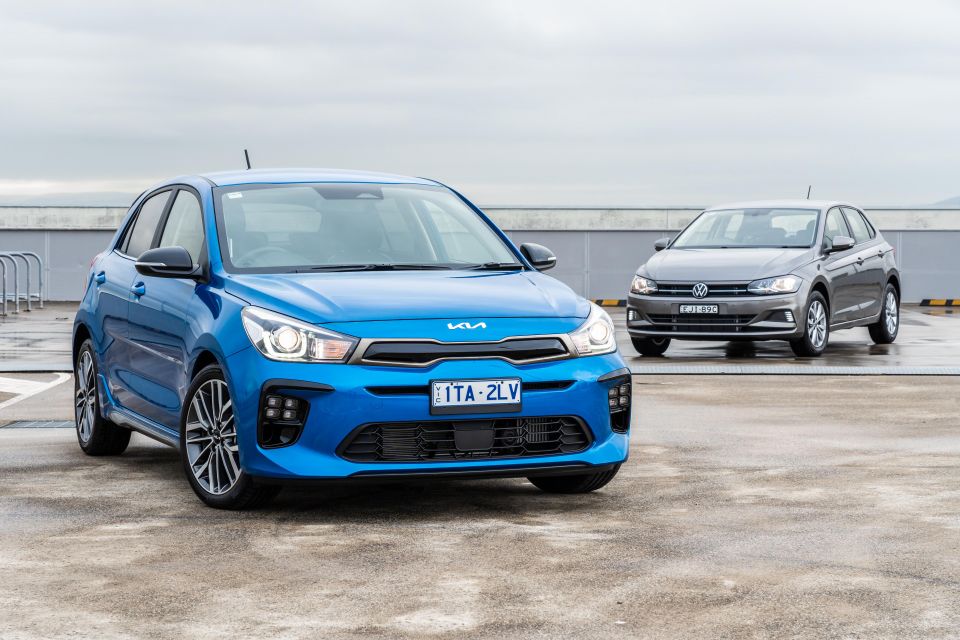
Kia Rio
The Rio is priced at $27,990 drive-away following a recent price increase, and has a list price of $25,590 before on-road costs.
There are no options packs or additional extras beyond paint, which is a $520 add-on in all cases except when it comes to Clear White.
Volkswagen Polo
The Polo has a list price of $23,390 before on-road costs, although our tester was also fitted with the Driver Assistance Package ($1500) for an as-tested sticker price of $24,890 before on-roads.
On paper, that’s cheaper than the Rio. In reality, the Volkswagen Australia website has a number of similarly-equipped Polo 85TSI models listed at around $30,000 drive-away.
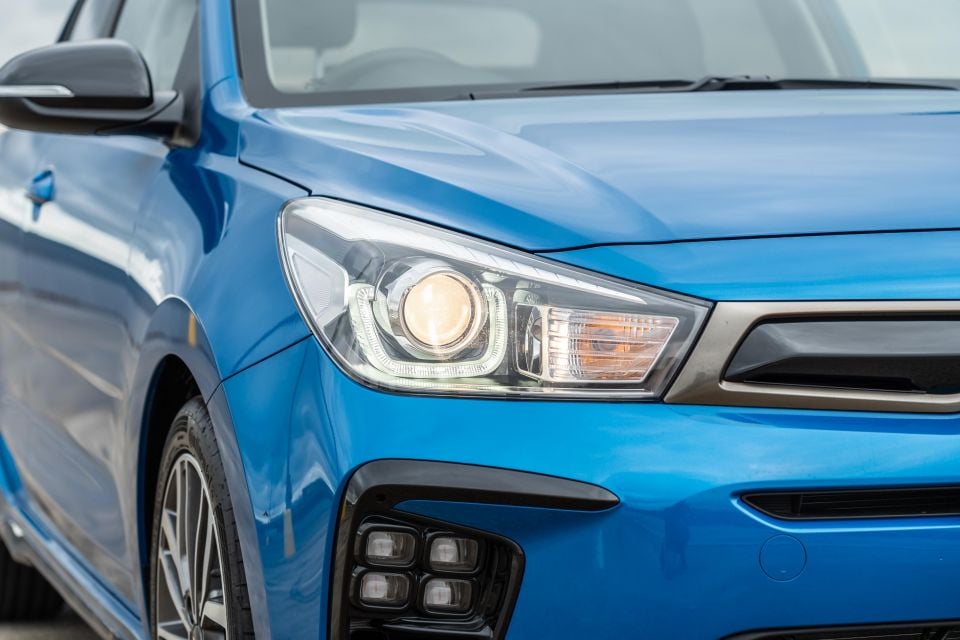
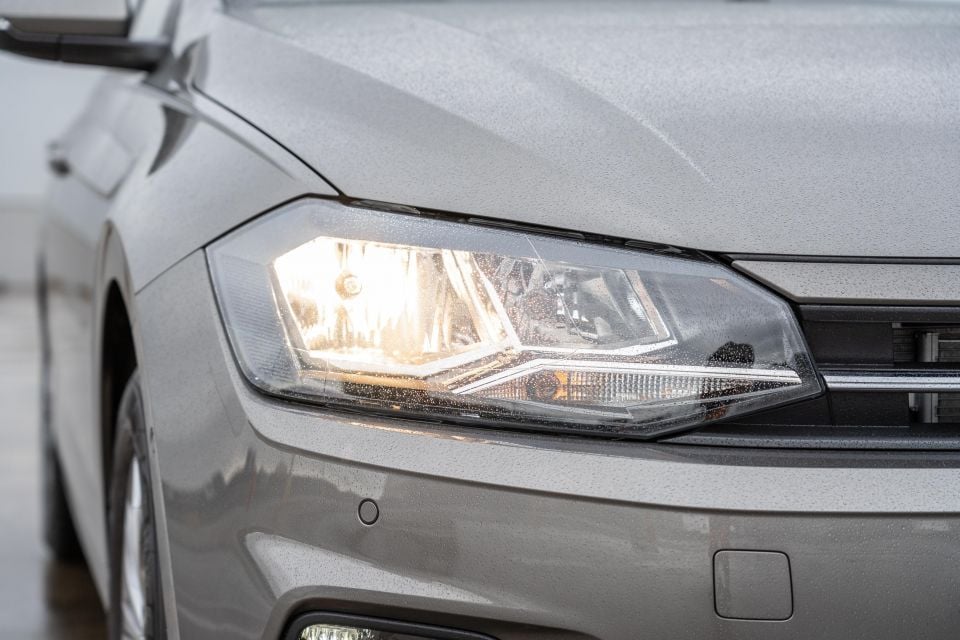
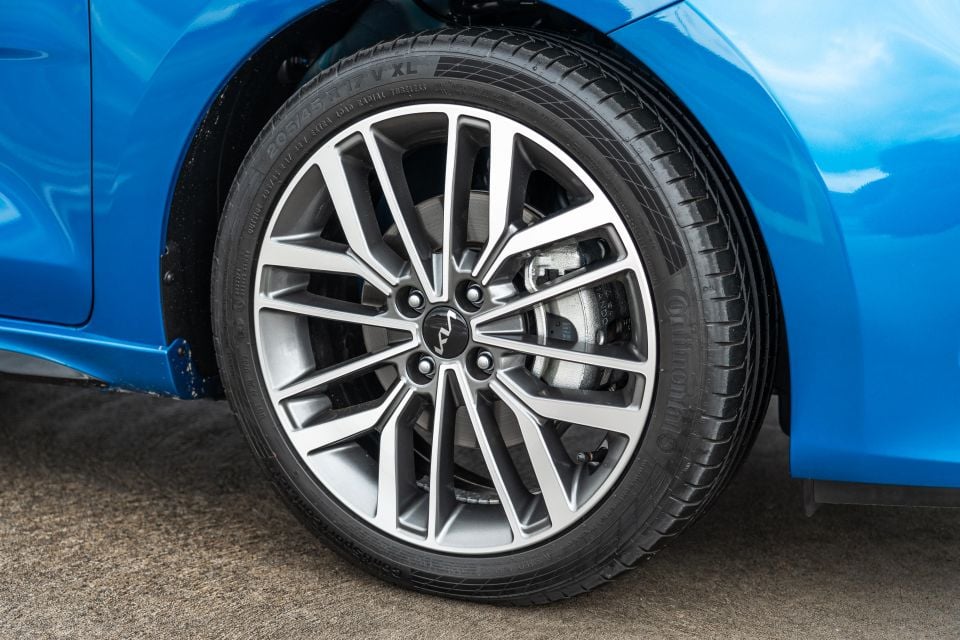
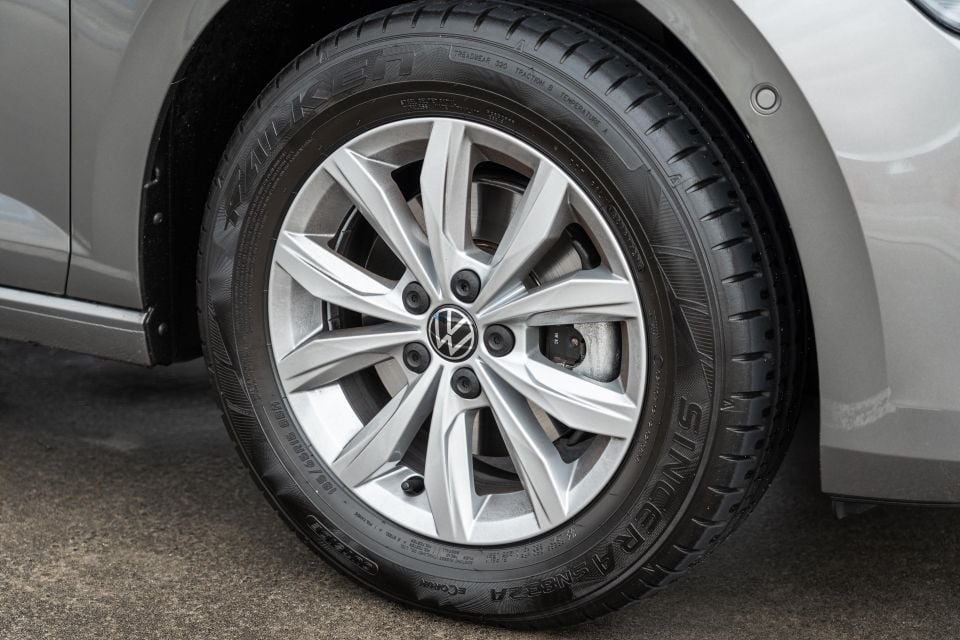
Both cars feature the following:
Equipment unique to the Kia includes:
Equipment unique to the Volkswagen includes:
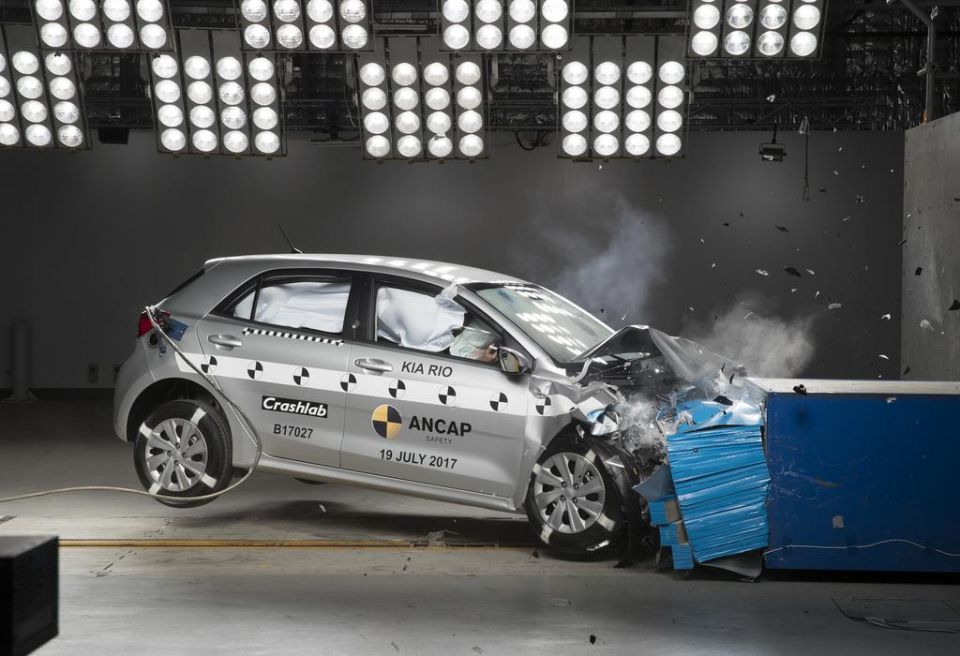
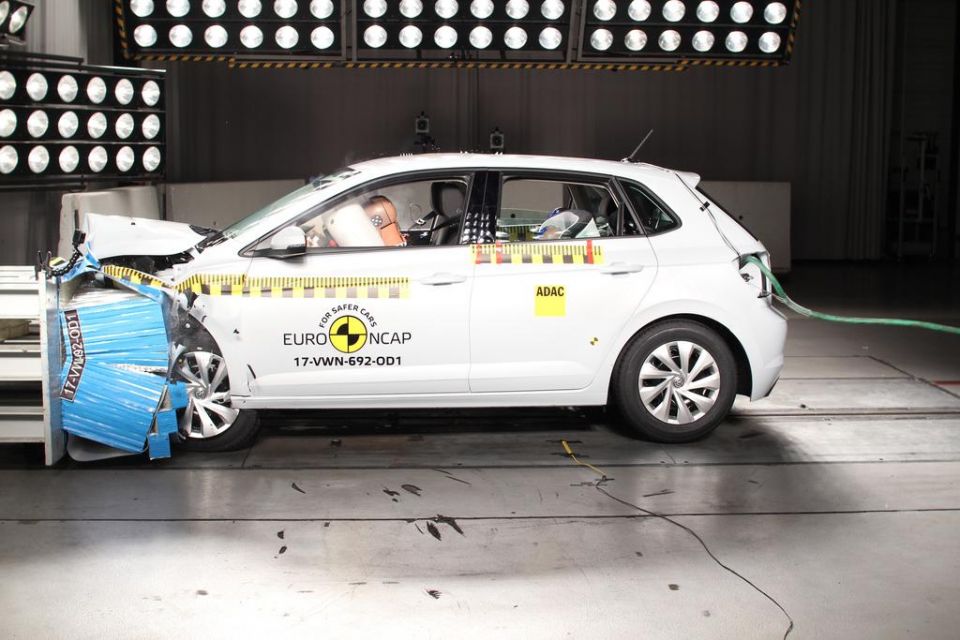
Both cars have five-star ANCAP safety ratings based on testing carried out in 2017. Although they were tested in the same year, the Rio was tested by ANCAP using older criteria, while the Polo was crashed under newer criteria by Euro NCAP.
The Rio earned a frontal offset crash rating of 14.52 out of 16 and a side impact score of 16 out of 16, while whiplash and pedestrian protection were rated Good and Acceptable, respectively.
The Polo received an adult occupant protection score of 96 per cent, a child occupant protection score of 85 per cent, a pedestrian protection score of 76 per cent, and a safety assist score of 59 per cent.
Safety equipment on both includes:
Blind-spot monitoring is standard on the Kia Rio, and is bundled in the Driver Assistance package in the Polo
Safety equipment unique to our Polo tester included rear cross-traffic alert, adaptive cruise control, and semi-autonomous parking assist (all optional). Although they’re offered in other markets, those features can’t be added to the Rio in Australia.
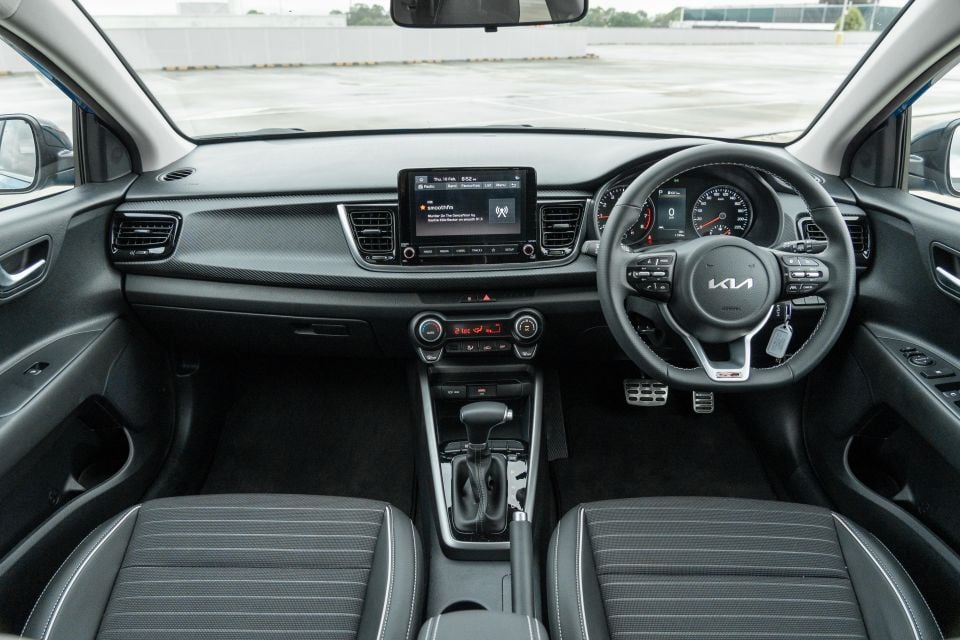
Kia Rio
Kia has made an effort to deliver a sporty feeling inside the Rio, and for the most part it’s succeeded.
The dashboard is trimmed in what looks like a carbon weave, the steering wheel is a lovely flat-bottomed GT-Line unit, and the seats feature a bit more bolstering than the flatter ones in the Polo. It’s the more interesting of the two interiors to look at, although it’s not necessarily better than the Volkswagen when it comes to the fundamentals.
The driving position is good for a city car, but the seats don’t slide back quite as far as the pews in the Polo, and their bases feel a bit shorter. It’s not quite as comfortable on longer trips, although the gap isn’t massive.
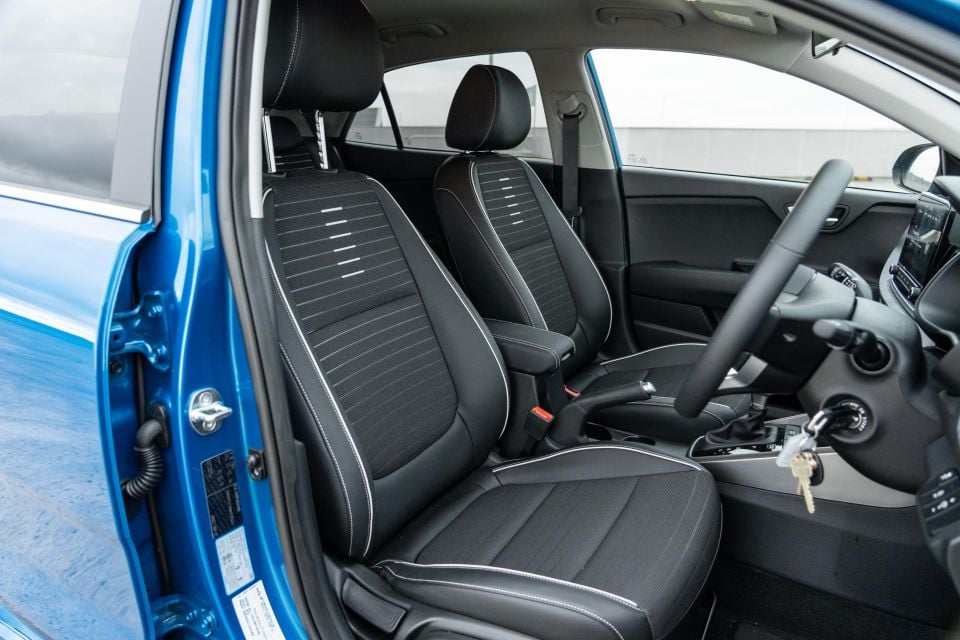
As is the case in its rival, the Rio has plenty of hard, scratchy plastics scattered around the cabin, but the wheel and shifter in particular are high-quality items. The addition of proper climate control is welcome alongside the Polo’s simpler air conditioning system.
You get plenty of storage in the Rio split across the cupholders, dual-tier under-dash slot, under-arm bin, and slim door pockets. Neither of these cars is short on places to hide things. Wireless charging is absent, and you only get one USB-A port rather than the two, newer USB-C ports that feature in the Polo.
Kia’s infotainment doesn’t look quite as glossy or polished as the VW system, but it packs a trump card in the form of wireless Apple CarPlay and Android Auto. Earlier iterations of Hyundai and Kia cars with wireless smartphone mirroring were buggy and unreliable, but the Rio’s system worked flawlessly.
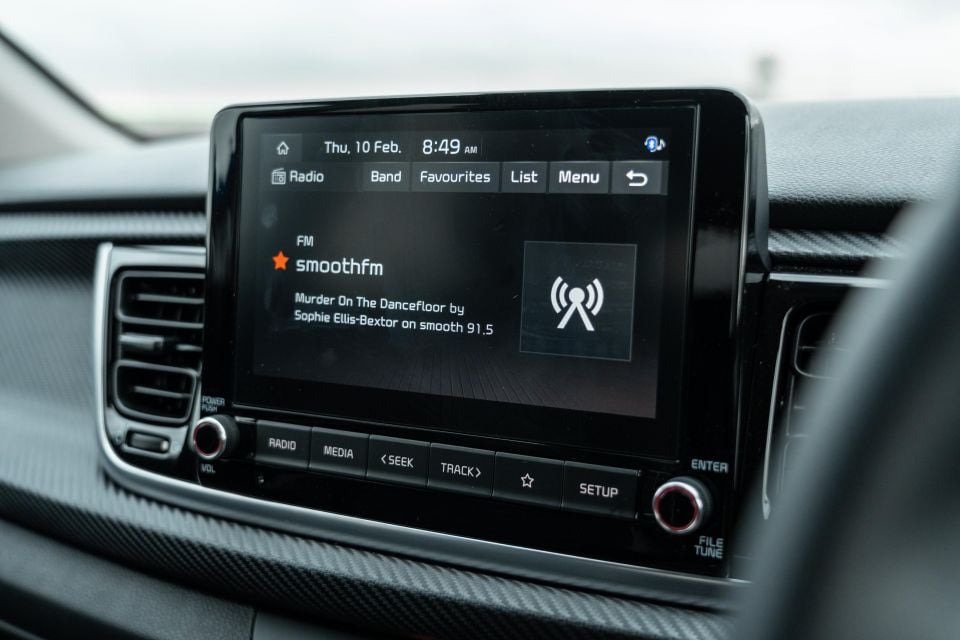
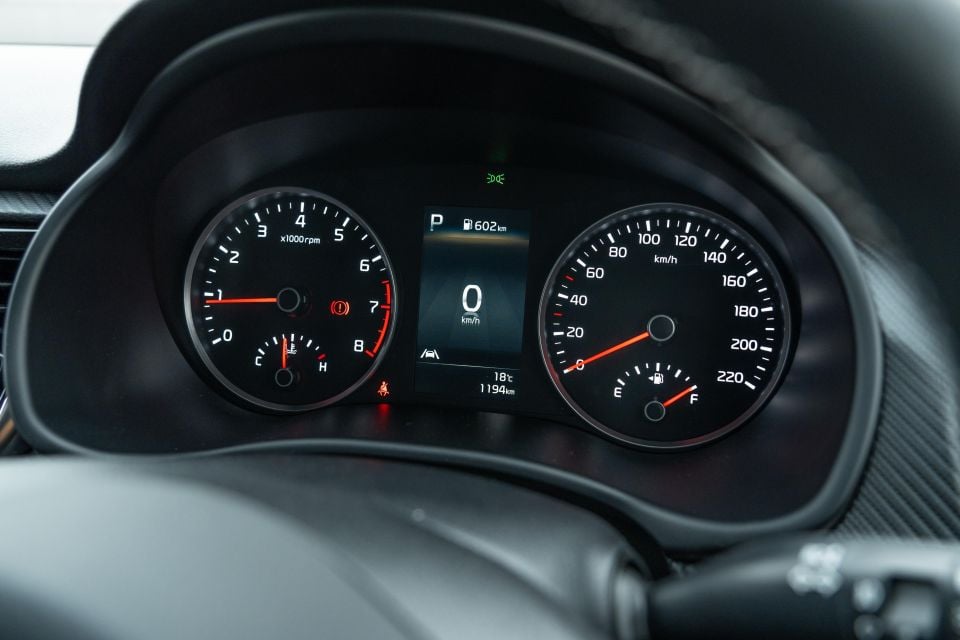
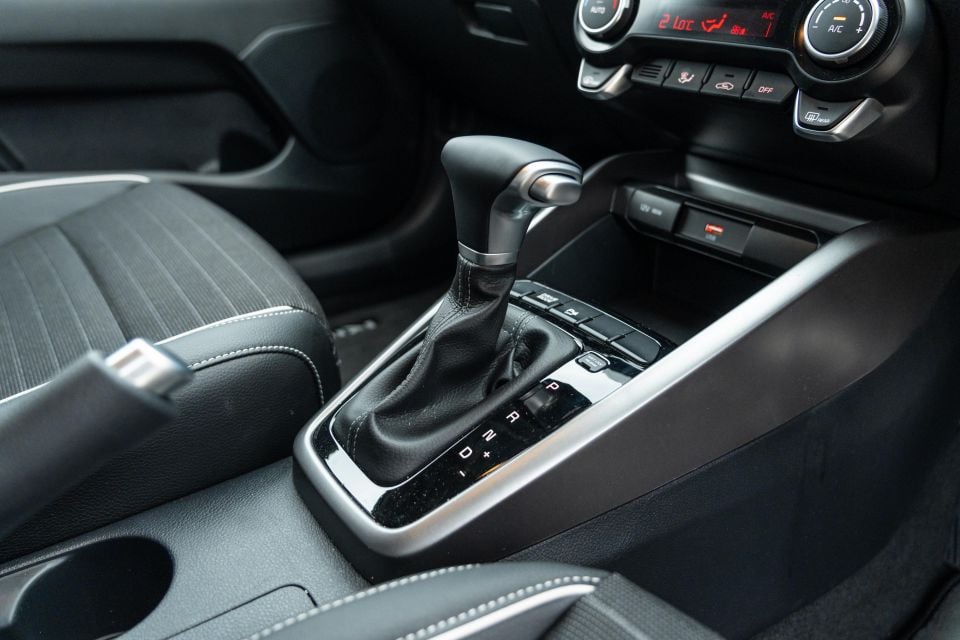
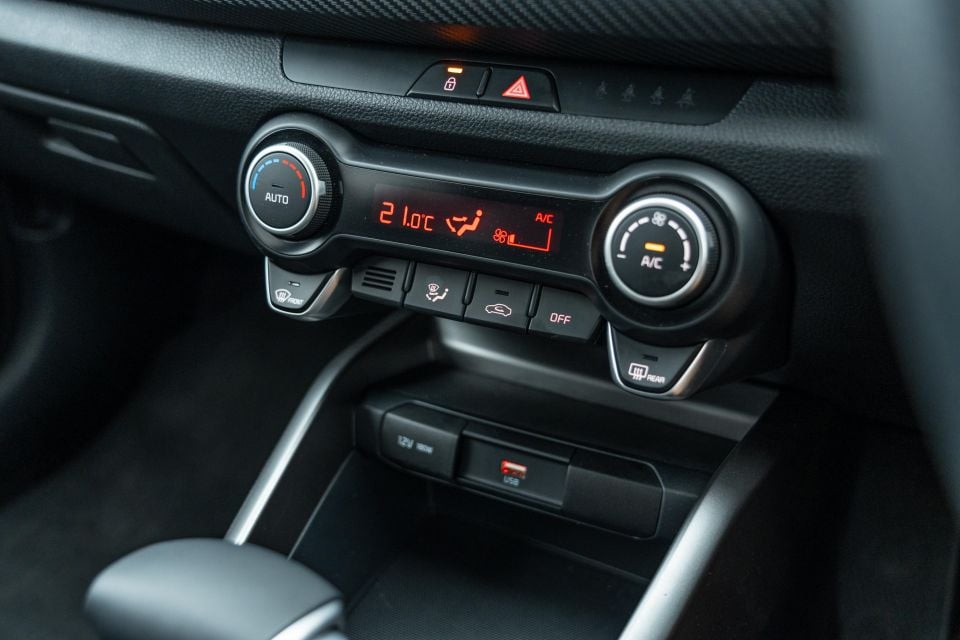
Plugging in isn’t a huge hardship, but having your phone just connect from your pocket or handbag is better.
You don’t get a fancy digital instrument binnacle. The simple analogue dials and colour trip computer have all the information you need though, and are more interesting to look at than those of its rival.
Rear seat space is good, but not on a par with that of the Polo. Headroom is decent, but not quite as accomodating for tall passengers or people who like wearing top hats, and legroom is slightly tighter. You’ll get your feet under the front seats more easily than in the Volkswagen.
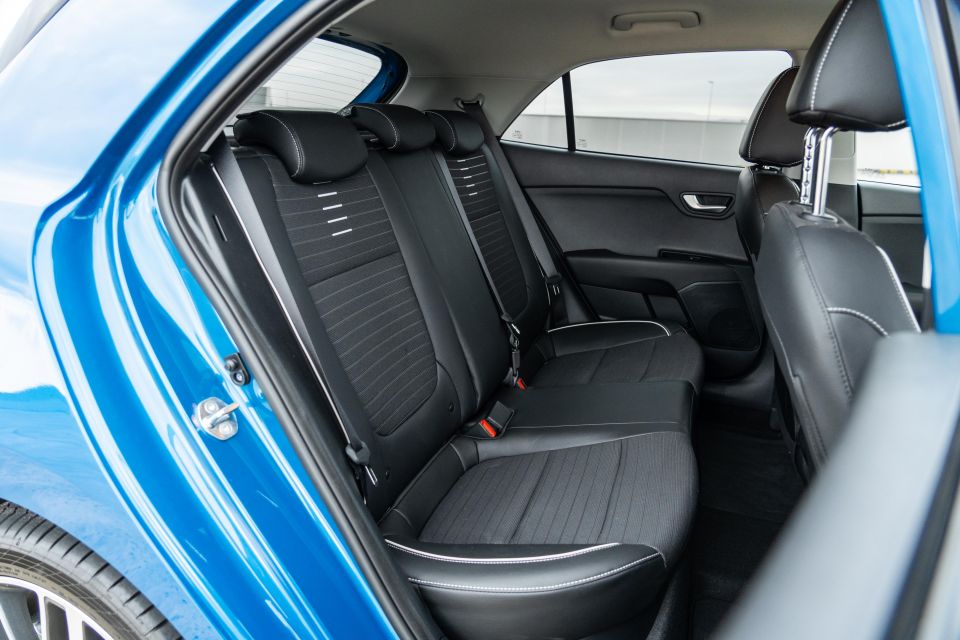
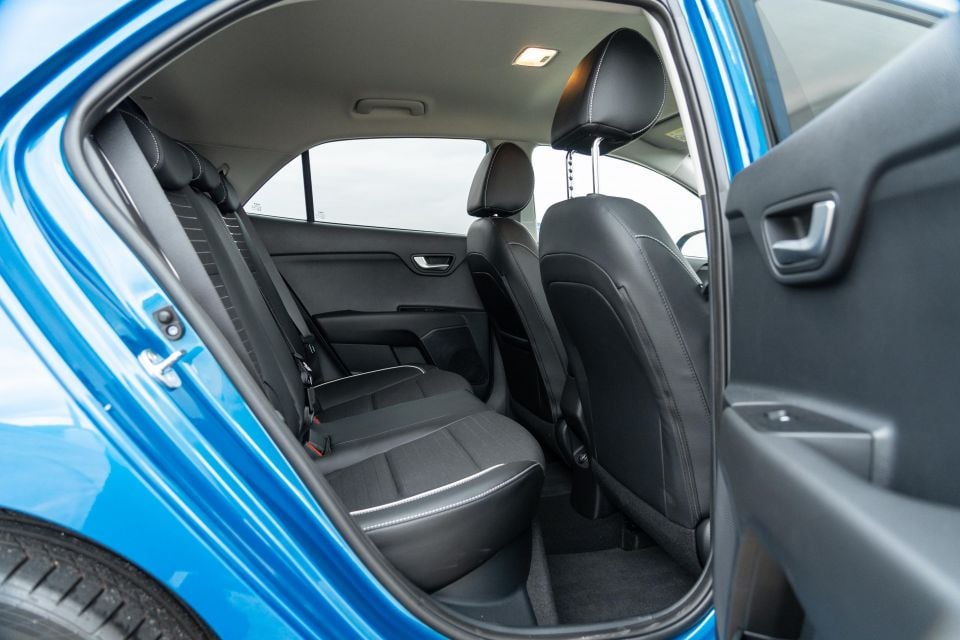
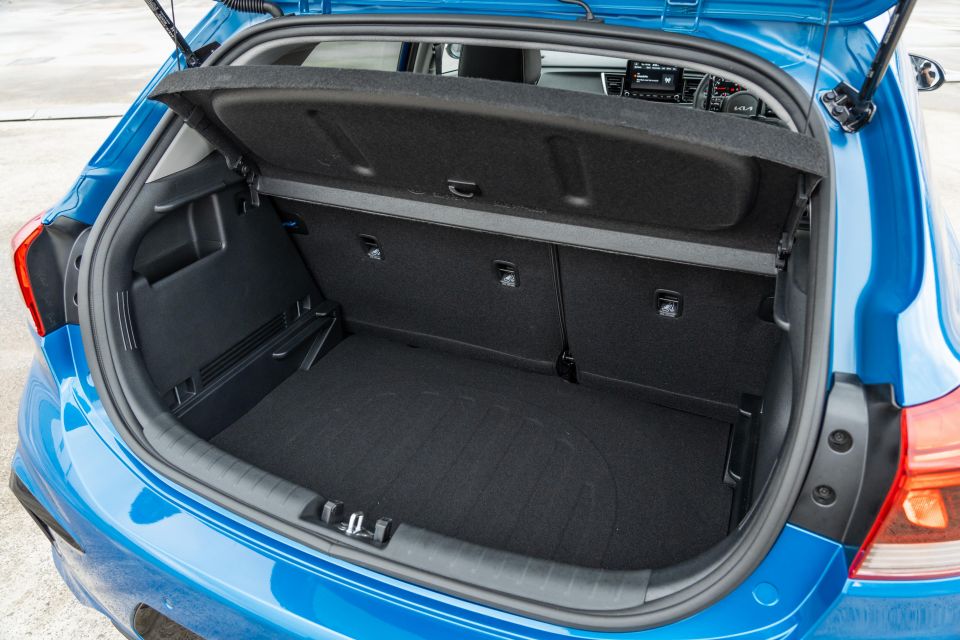

Kids will fit back there comfortably, and it’s still suitable for normal-sized adults on shorter trips. The Rio only has the one USB-A port in the rear, and there are no air vents or fold-down central armrest.
The boot has a claimed 325 litres of space, and you can drop the 60:40 rear seatbacks to liberate a handy 980L.
There’s a space saver beneath the floor, and the space itself has a more pronounced loading lip than that of the Polo.
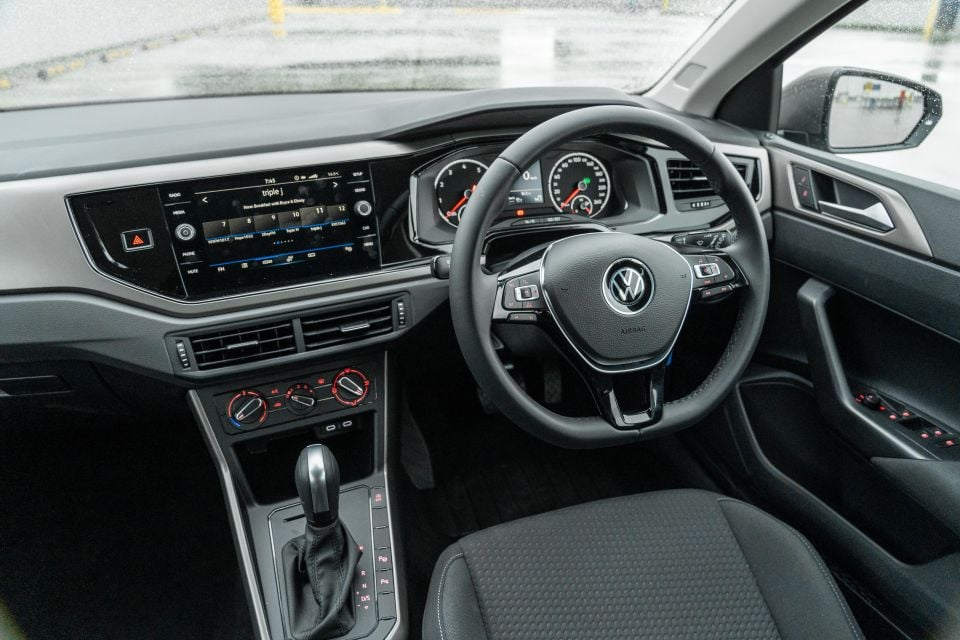
Volkswagen Polo
The Polo is typically Volkswagen from behind the wheel. The fundamentals are excellent, although it’s not big on excitement.
Although it’s a small car, the Polo feels grown-up and spacious in the front seats. The driving position is excellent, with plenty of space for tall drivers perched on the well-stuffed, cloth-trimmed seats, and the touch points feel high quality.
The steering wheel is lifted straight from more expensive cars like the Tiguan and, given this particular Polo hasn’t yet been treated to its mid-life update, doesn’t feature the fiddly touch controls spreading through the Volkswagen range, while the handbrake is trimmed in smooth leather.
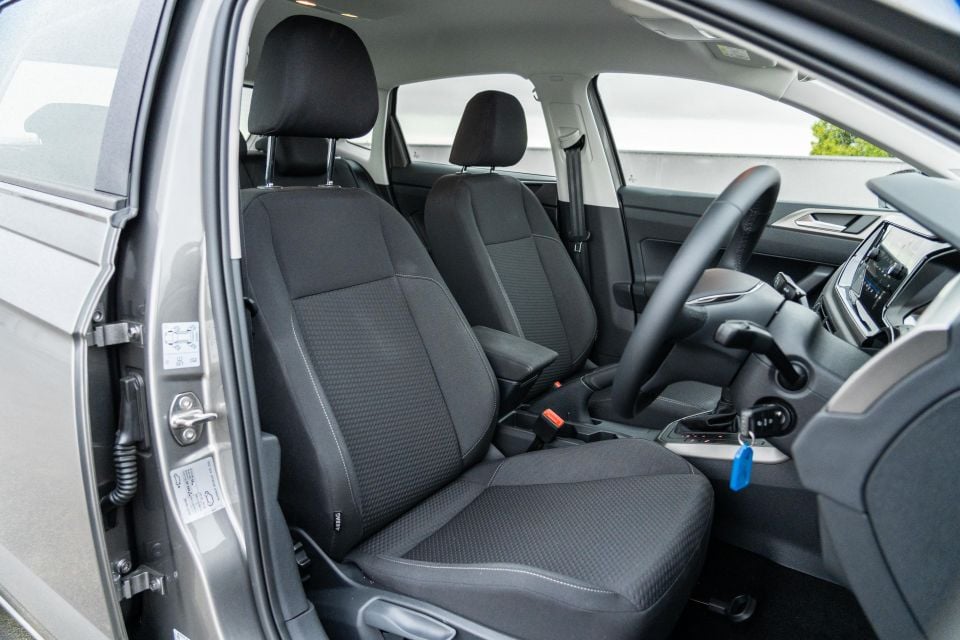
Yes, there are plenty of hard or scratchy plastics spread throughout the cabin, but the things you grab most often all play into the Polo’s premium-ish billing. Even the manual climate controls feel solid, although they are a bit old-fashioned alongside the proper climate control setup in the Rio.
There’s plenty of storage split across the cupholders, underarm bin, tray beneath the dashboard, and spacious door pockets. You miss out on wireless charging, but dual USB-C ports (complete with handy backlight) are on hand up front to keep your phone fully juiced.
As for infotainment? The 8.0-inch system in the Polo is easy to use, and looks more polished than that of the Rio. It has everything you’d expect except for DAB radio, although it’s worth noting the updated model due in May will be offered with a larger 9.2-inch display.
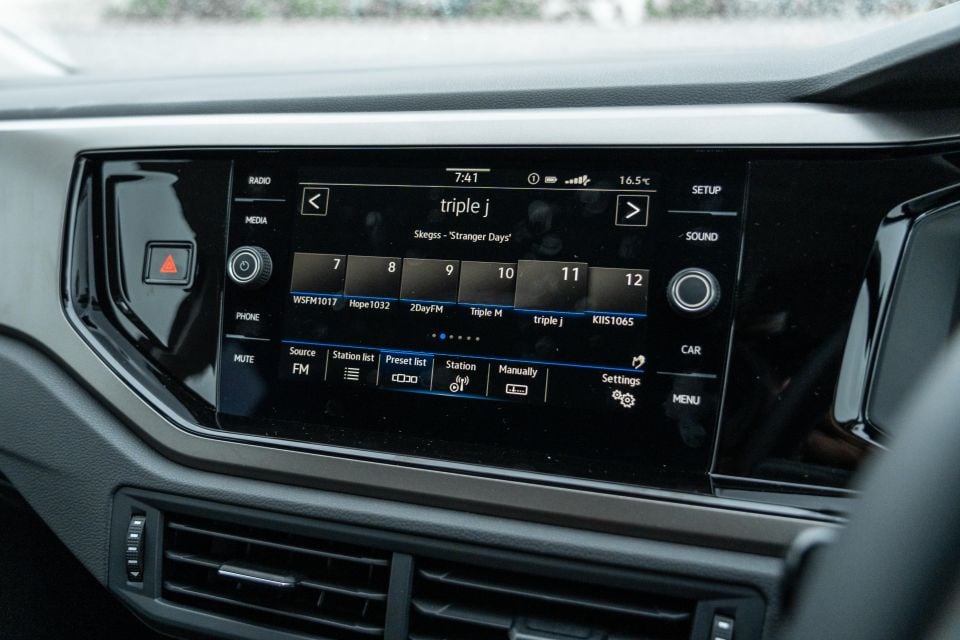
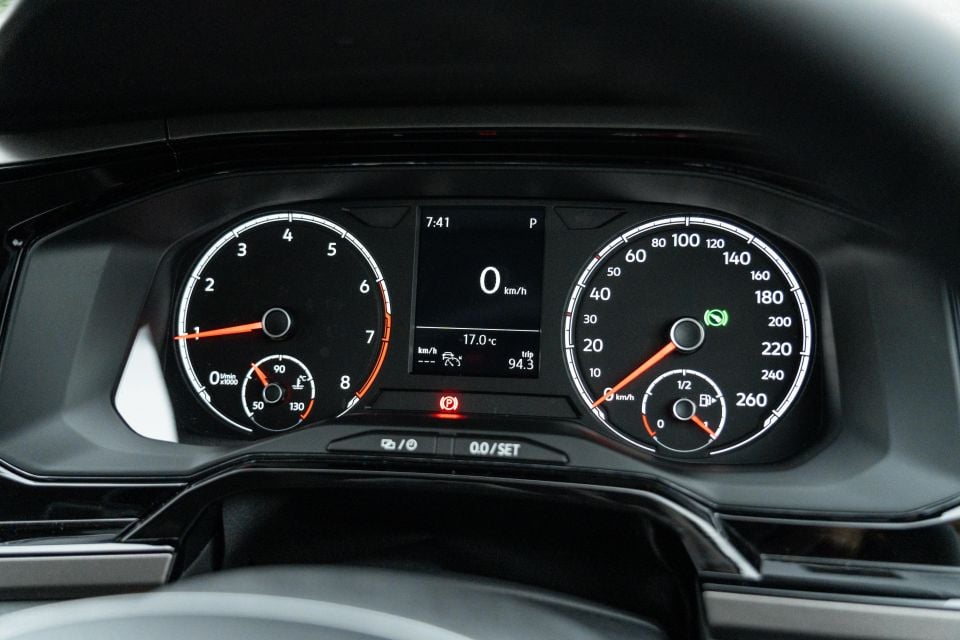

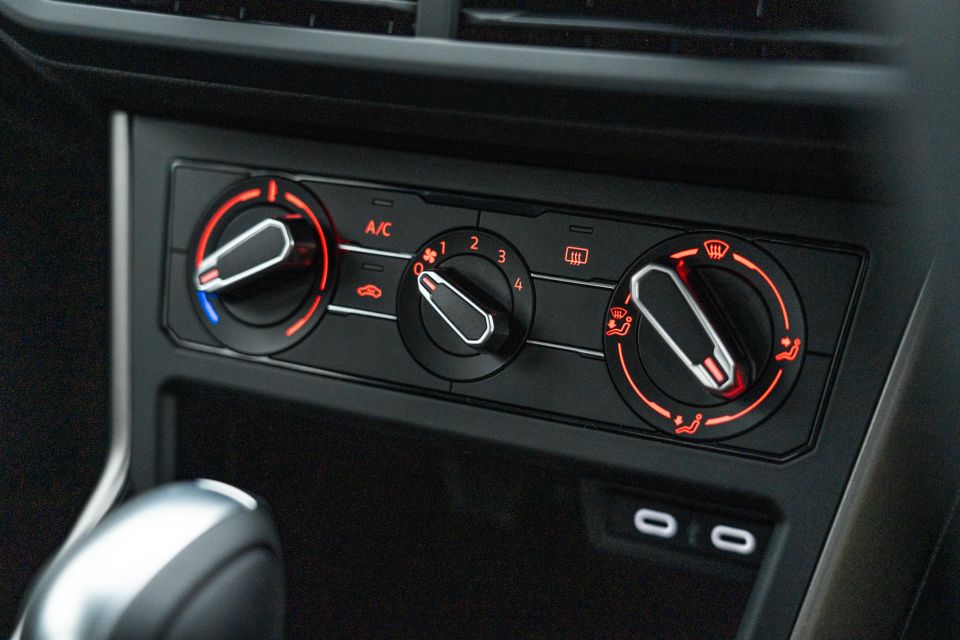
You don’t get a fancy digital instrument binnacle, but the simple analogue dials and monochrome trip computer have all the information you need.
With no digital dials and a slab of grey plastic on the dashboard, there’s not much visual excitement up front. The Rio isn’t the most thrilling thing in the world either, but its faux carbon trim and wing-shaped dash make it the more interesting of the pair on test.
Rear seat space is impressive, enabled by the fact this Polo is actually the same size as a Mk4 Golf on the outside. Although it’s smaller (slightly) than the Kia on paper, it feels bigger inside.
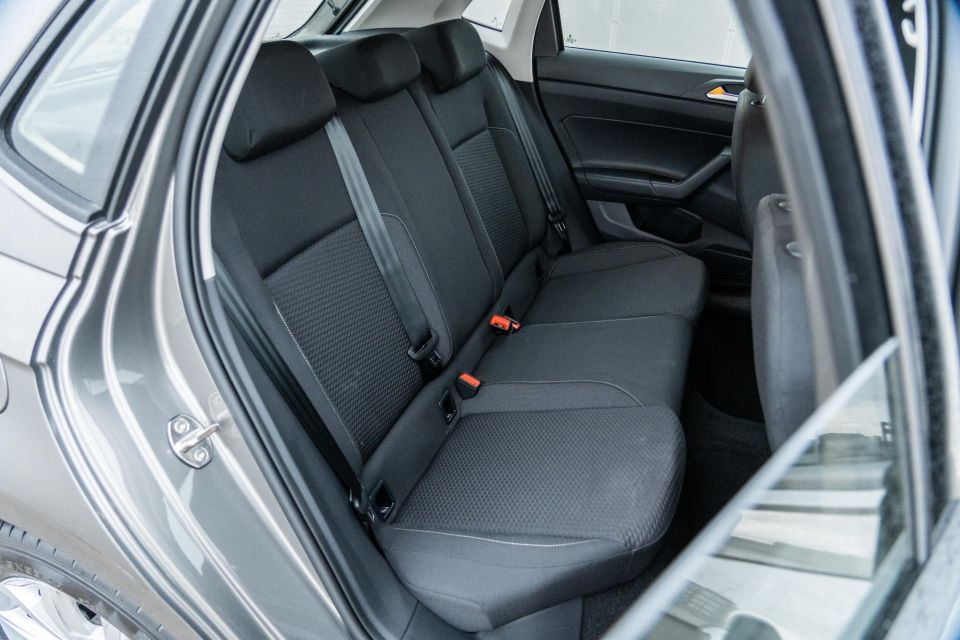
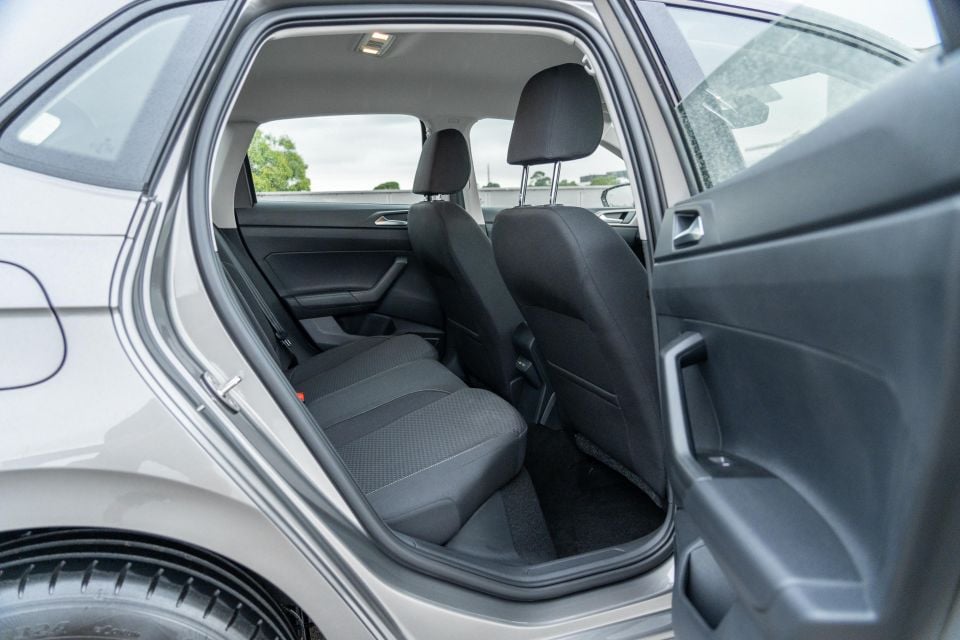


Sure, it’s not a Passat, but you’ll get kids back there comfortably, and normal-sized adults will be comfortable enough behind normal-sized adults as well. You wouldn’t want to be perched in the middle seat, but as city cars go this is about as good as it gets.
The dual USB-C ports are a nice touch, although a fold-down central armrest or air vents would make it even more grown up back there. You get two ISOFIX anchor points, and three top tether mounts for child seats.
Boot space is a claimed 351 litres, expanding to 1125L with the second row folded. It’s a broad, flat space that’ll swallow a couple of oversized suitcases, and hides a steel full-sized spare wheel beneath its floor.
| Kia Rio | Volkswagen Polo | |
|---|---|---|
| Length | 4070mm | 4053mm |
| Width | 1725mm | 1751mm |
| Height | 1450mm | 1446mm |
| Wheelbase | 2580mm | 2548mm |
| Boot | 325L | 351L |
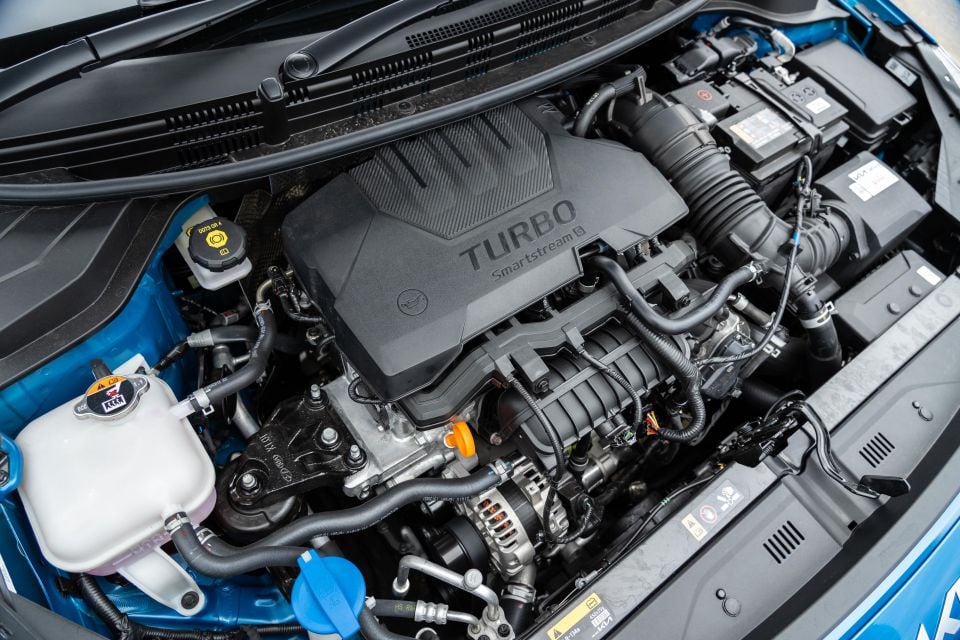
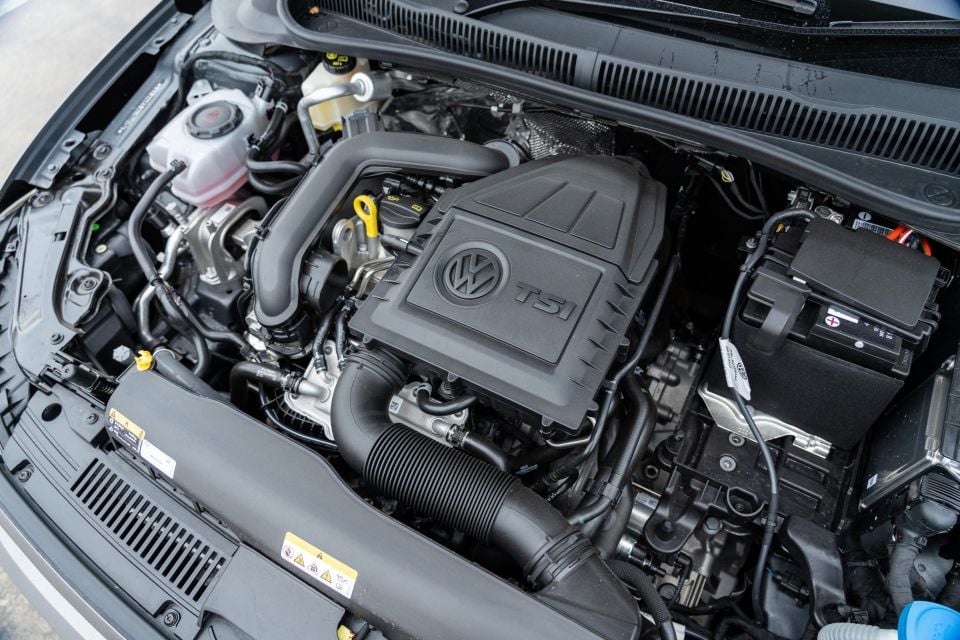
Kia Rio
Although it wears a sporty GT-Line badge and bodykit, the Rio is the less powerful of the two cars on test.
It’s powered by a turbocharged 1.0-litre three-cylinder engine with 74kW and 172Nm, mated exclusively to a seven-speed dual-clutch automatic transmission.
Claimed fuel economy is 5.3 litres per 100km, and the Rio has a 45L fuel tank. It drinks cheaper 91 RON regular unleaded, unlike the Polo.
Volkswagen Polo
Power in the Polo comes from a 1.0-litre three-cylinder turbochargedengine with 85kW and 200Nm, mated in the case of our tester to a seven-speed dual-clutch transmission.
Claimed fuel economy is 5.0 litres per 100km, and the Polo has a 40L fuel tank. It drinks 95 RON premium unleaded.
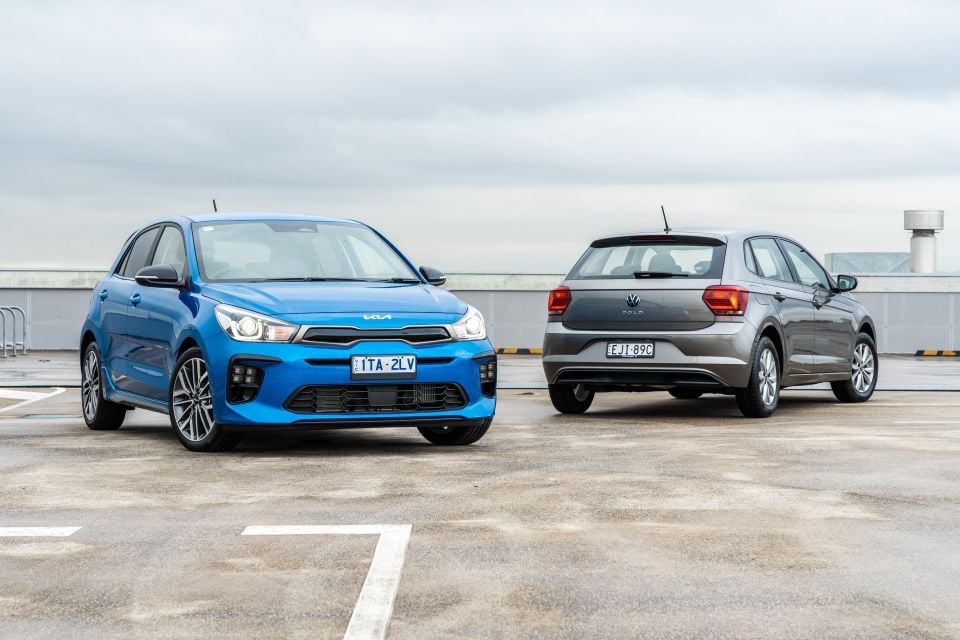
Where expert car reviews meet expert car buying – CarExpert gives you trusted advice, personalised service and real savings on your next new car.
Kia
Kia has given the Rio GT-Line a similar feel to the Cerato GT. It’s more overtly sporty than the Polo, with a tauter ride and heavier steering that match its bodykit and badge nicely.
The engine settles into a typically thrummy three-cylinder idle, and makes an angry grumble when you put your foot down. It’s a shame it defaults to Eco Mode whenever you turn it on, though.
Put your foot down off the mark and it takes a second to really get hit its stride, but once the turbocharger is spinning there’s a decent shove in the back through the mid-range. There’s some fun to be had if you’re in a hurry, although the engine still can’t match the Volkswagen’s for punch.
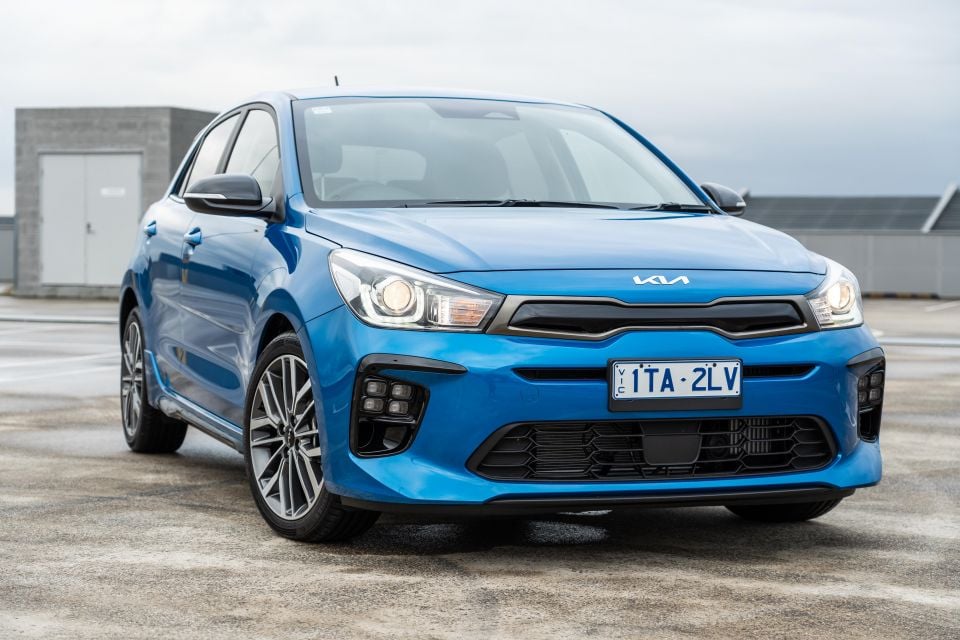
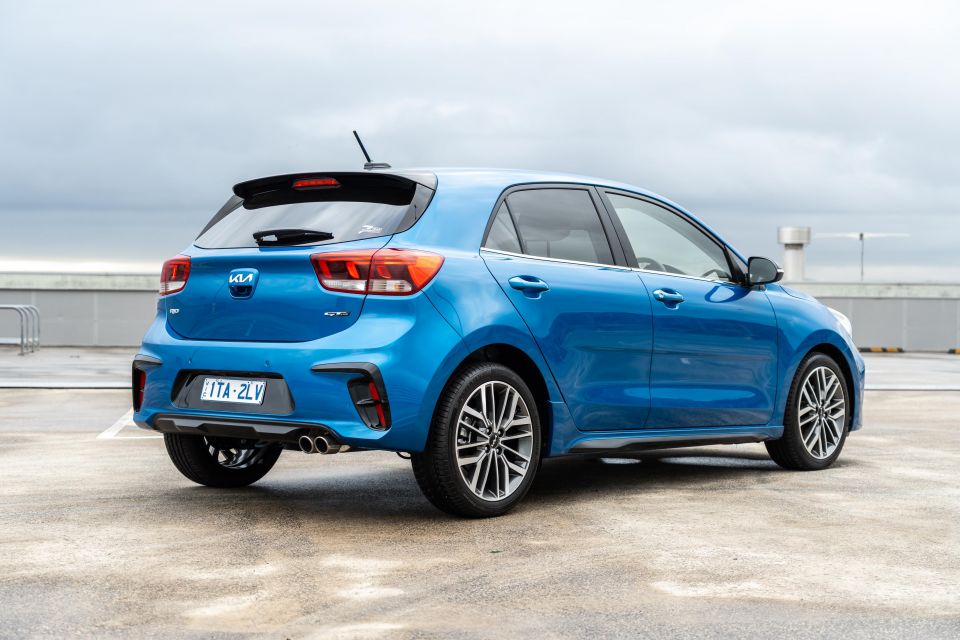
The transmission is also slightly off the pace. It’s reasonably smooth off the mark, but doesn’t have the same snappy feeling as a Volkswagen DSG when you’re rolling. It also doesn’t feel quite as clever, occasionally wrong-footing itself on light throttle inputs.
It’s not bad, but it lacks the last degree of polish that’s been baked into the latest Volkswagen dual-clutch products when you’re rolling.
Although it’s still light enough to park with one finger, the steering in the Rio has more weight than that of the Polo. It’s in keeping with the car’s sportier billing and, in partnership with the sportier suspension, makes the GT-Line the pick for keen drivers on a budget.
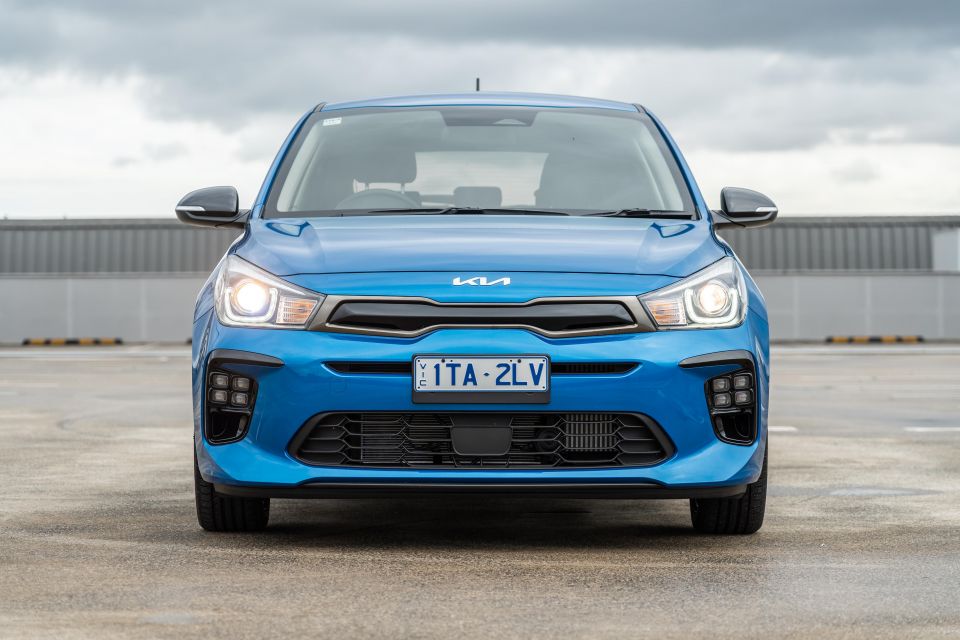

It feels like a shrunken Cerato GT, with a similarly keen front end. The trade-off is a ride that’s busier than that of the Volkswagen over pockmarked city streets, although it’s far from unbearable. I can easily understand how the more purposeful feel of the Rio would be preferable.
Both these cars are impressive at 100km/h. You could easily drive them both for hours on the highway and not be bullied by trucks or battered by crosswinds, which hasn’t always been the case in city hatchbacks.
The Rio settles down nicely at highway pace, and the cruise control keeps a tight grip on your speed down hills. Kia doesn’t let you set your speed in 1km/h increments, though, instead opting for a more old-fashioned “SET” graphic when you’re using cruise.
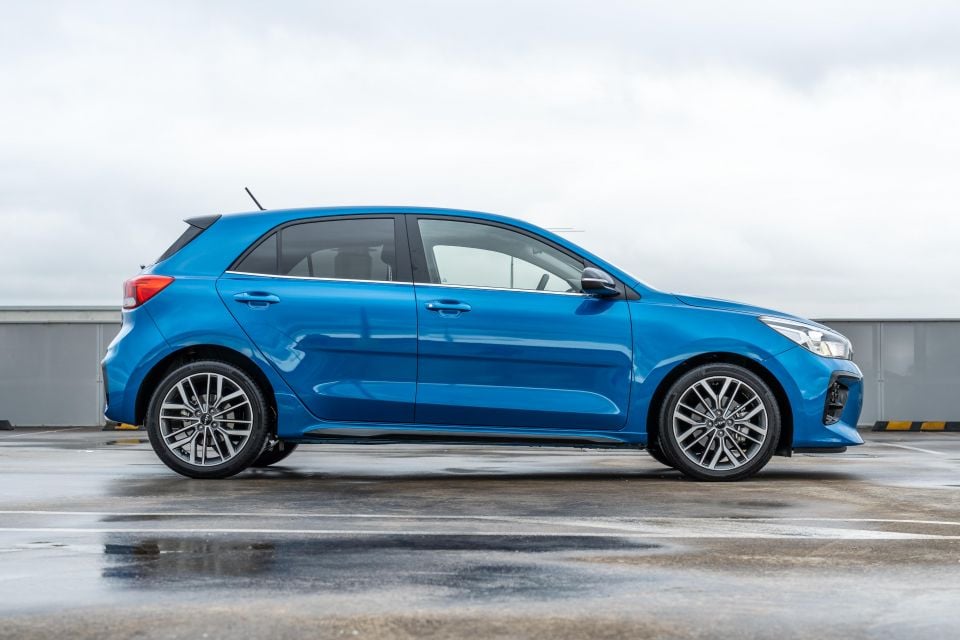
The lane-centring technology has been lifted from more expensive Kia and Hyundai products, and does a good job keeping the car between the white lines at the legal limit.
It’s a bit too grabby around town for my liking, but not everyone in the CarExpert office feels the same. Thankfully, it’s easy enough to turn off using a hard button on the steering wheel.
The Polo can’t even be optioned with similar technology, which is a tick for the Rio.

Volkswagen
The Polo drives in the sort of grown-up way you’d expect.
The three-cylinder engine is quieter than the Kia’s from the second you turn it on, and settles into a smoother idle. It’s still identifiably a three-pot, but it hides the fact it’s unbalanced better. Although it has a rumbly three-cylinder sound when you put your foot down, it’s more muted here.
Volkswagen is getting better at making its dual-clutch transmissions smooth off the mark, but there’s still some low-speed awkwardness present when auto start/stop is switched on. It just takes a beat to switch the engine on, engage a gear, and get moving, which makes the Polo feel a bit jerky.
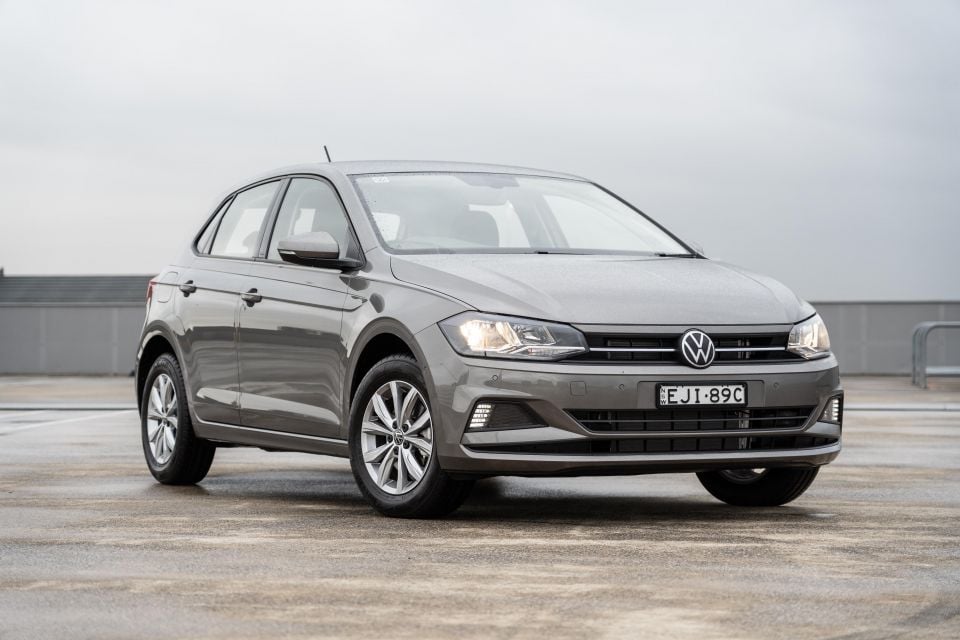
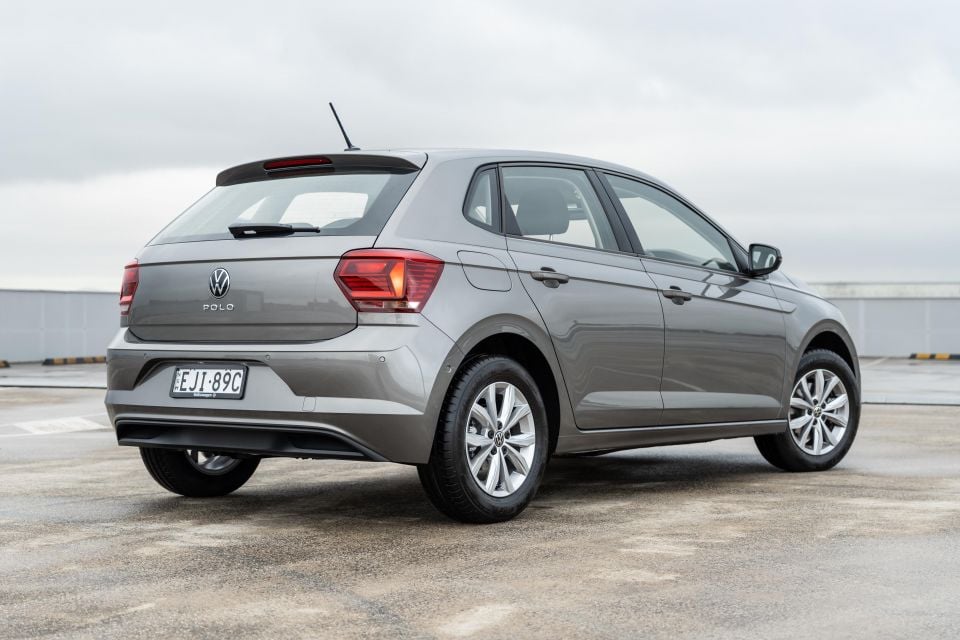
Although the start/stop is slightly smoother than in the Kia, the process of getting moving is slightly clumsier.
Once you’re rolling, the DSG is smoother, smarter, and faster than the dual-clutch in the Rio. When you’re light on the throttle it shuffles unobtrusively through the lower gears; put your foot down and it kicks down quickly to drop you right in the meat of the torque band.
Volkswagen hasn’t bothered trying to make the Polo feel sporty. It has unashamedly light steering and a plush ride on its 15-inch alloy wheels, both of which make it a relaxed companion in the city.
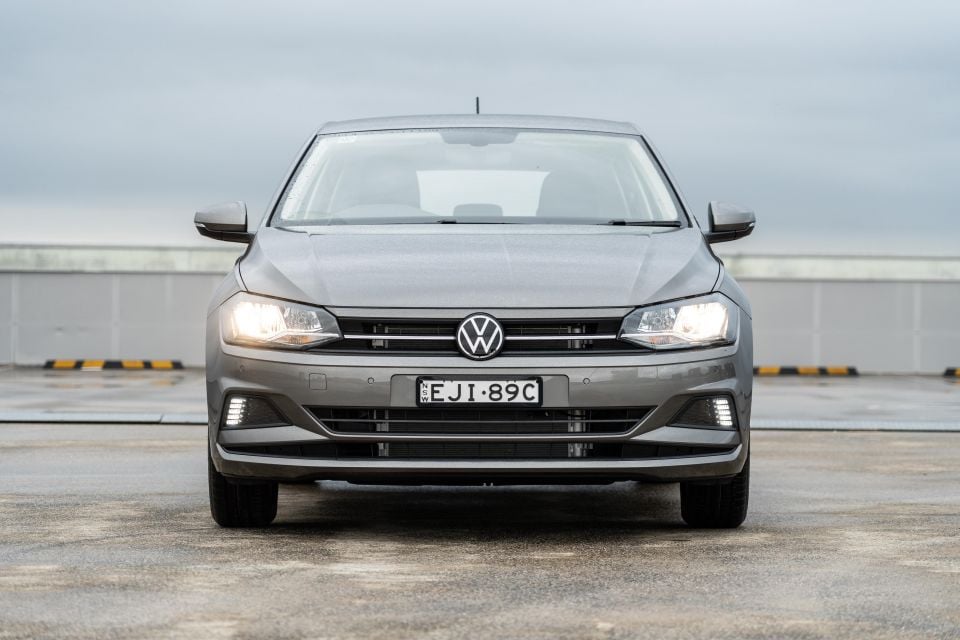
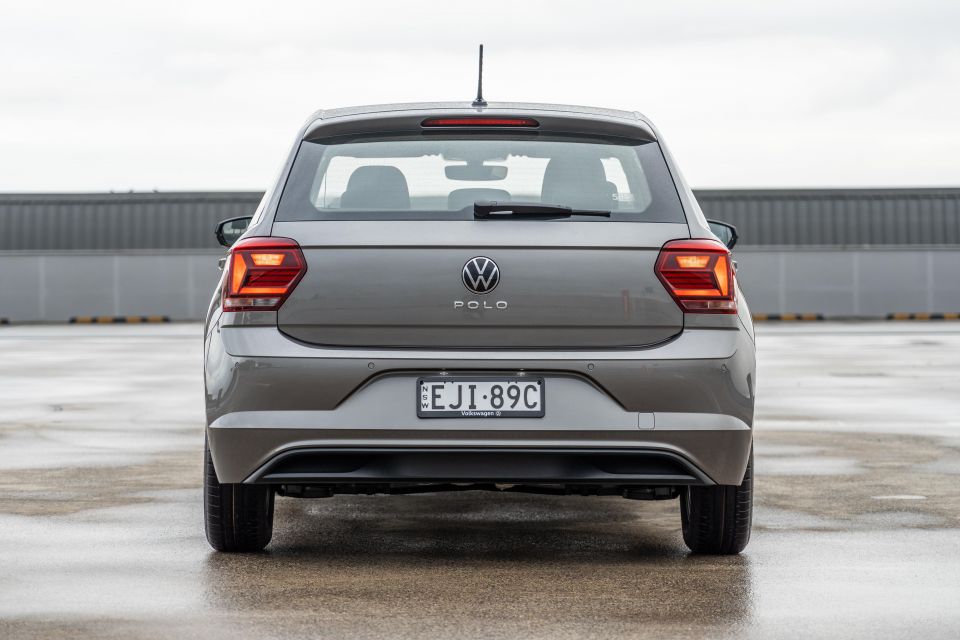
The sort of bumps you feel in the Rio float under the Polo’s wheels, and it’s easier to thread through tight carparks or into small parking spots because its reversing camera is larger and clearer.
Although they look small compared to the shiny 17s on the Rio, the wheels on the Polo are less likely to get scraped on tall kerbs because you have more sidewall to protect them. If you’re a new driver – or a driver who’s always parking in a hurry – that’s handy.
Of course, the more softly-sprung Polo feels taller than the Rio in the corners. There’s more body roll, and the steering doesn’t have the same weight to it, neither of which is particularly confidence-inspiring.
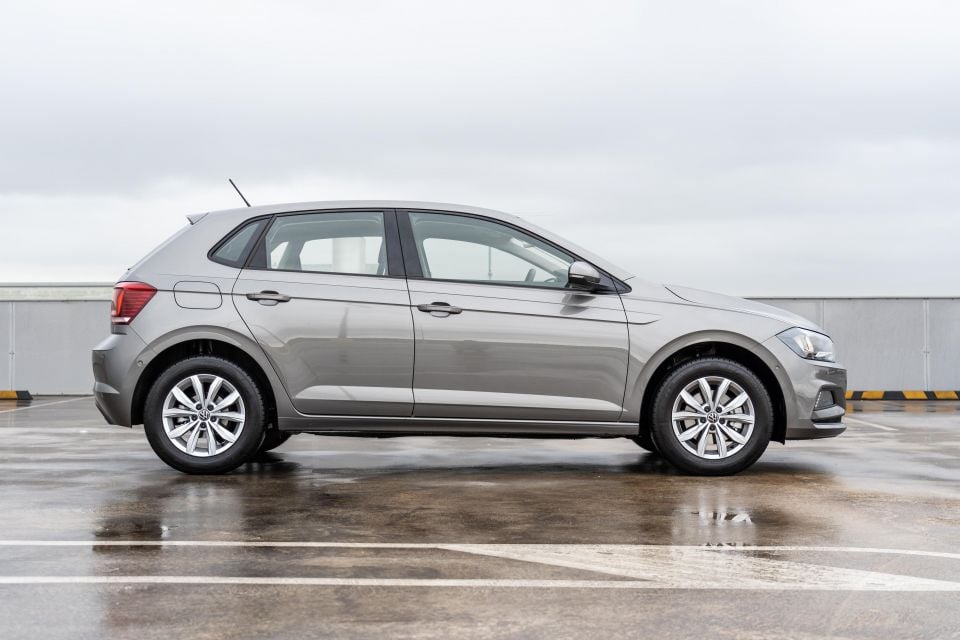
Like the Rio, the Polo feels like a bigger car on the highway. It’s not battered by crosswinds or buffeted by trucks, and you could happily drive it for hours without getting tired.
Wind and road noise are better suppressed in the Volkswagen, and the optional adaptive cruise control system makes long drives less of a hassle. The lack of lane-keeping is a knock on the Polo, albeit one that should be rectified when the facelifted model touches down in May.
| Kia Rio | Volkswagen Polo | |
|---|---|---|
| Weight | 1197kg | 1154kg |
| Front suspension | MacPherson strut | MacPherson strut |
| Rear suspension | Torsion beam | Torsion beam |
| Front brakes | Ventilated disc | Ventilated disc |
| Rear brakes | Solid disc | Solid disc |
| Turning circle | 10.2m | 10.6m |
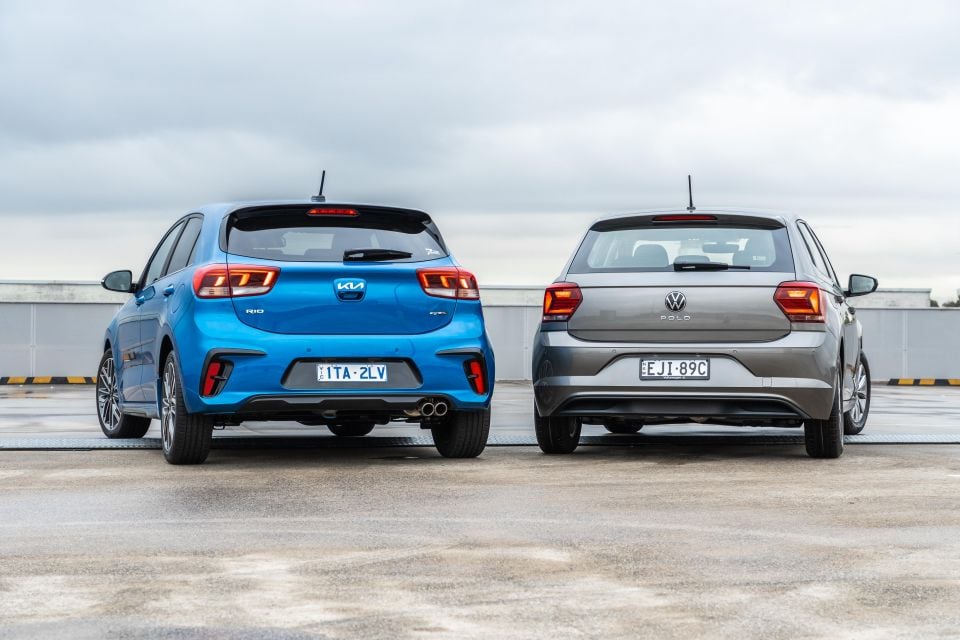
Kia
Kia backs the Rio with a seven-year, unlimited-kilometre warranty and offers seven years of capped-price servicing.
The first seven services are capped at a combined $3299 in the GT-Line. The first five cost a combined $2128, and maintenance is required every 12 months or 10,000km.
Volkswagen
The Volkswagen Polo is covered by a five-year, unlimited-kilometre warranty.
Volkswagen offers three- and five-year servicing plans priced at $1050 and $1900 respectively, and maintenance is required every 12 months or 15,000km.
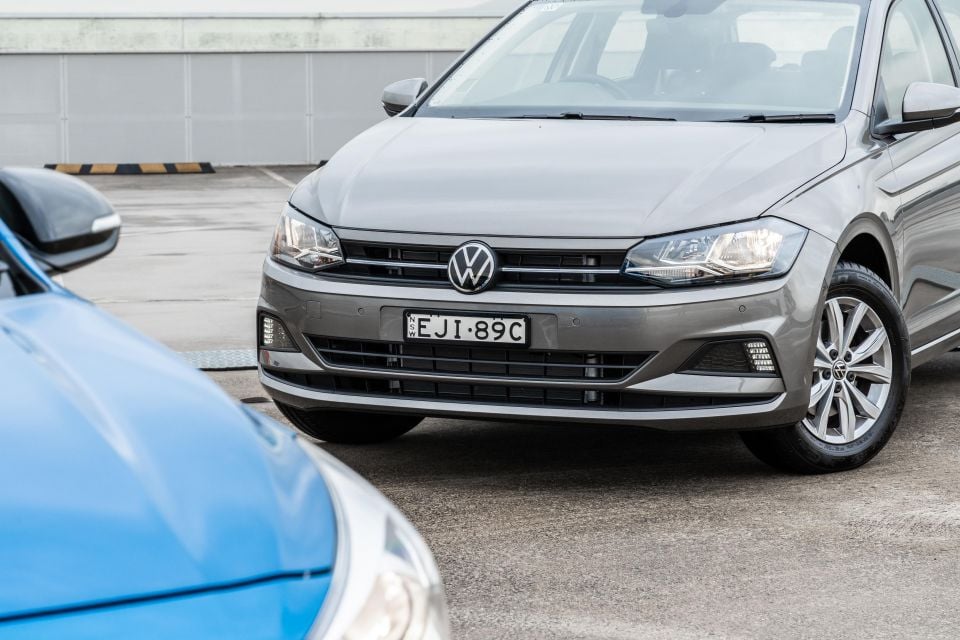
There’s not a heap to separate the Rio and Polo in this comparison.
The Kia Rio has a similar list price but, based on the drive-away pricing provided on the Volkswagen Australia website, manages to undercut the Polo on test by around $2000.
It’s a lot of car for the money, and the sporty GT-Line bodykit and more interesting interior design are both welcome contrasts to the more demure Volkswagen.
More work is required on the powertrain front. The three-cylinder engine in the Rio is a rougher character than the Polo’s polished triple, and its dual-clutch transmission exhibits similar levels low-speed awkwardness… but without the same crisp, snappy feeling on the move.
Neither of these cars are massive, but the Kia also can’t match the level of space on offer in the Volkswagen.
It won’t set your heart racing, but the buttoned-down, sensible Polo remains the city car to beat.
It’s going to be interesting to see if that changes with the arrival of the better-specified – but more expensive – facelift touching down in May. If you can’t wait to find out, there’s plenty of life in the existing model.
MORE: Everything Kia Rio MORE: Everything Volkswagen Polo
Share your thoughts with us in the comments below!
Scott Collie is an automotive journalist based in Melbourne, Australia. Scott studied journalism at RMIT University and, after a lifelong obsession with everything automotive, started covering the car industry shortly afterwards. He has a passion for travel, and is an avid Melbourne Demons supporter.
Share your thoughts and write a review of a car you own and get featured on CarExpert.


Max Davies
5 Hours Ago


William Stopford
21 Hours Ago


Ben Zachariah
22 Hours Ago


Derek Fung
22 Hours Ago


Matt Campbell
1 Day Ago


William Stopford
2 Days Ago